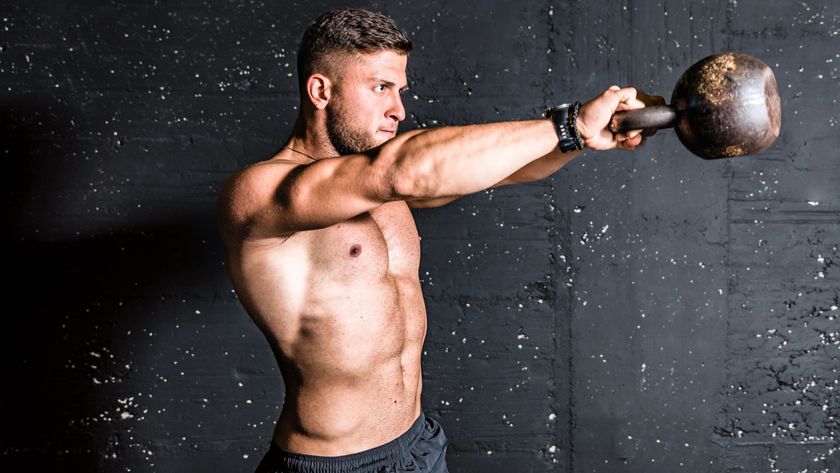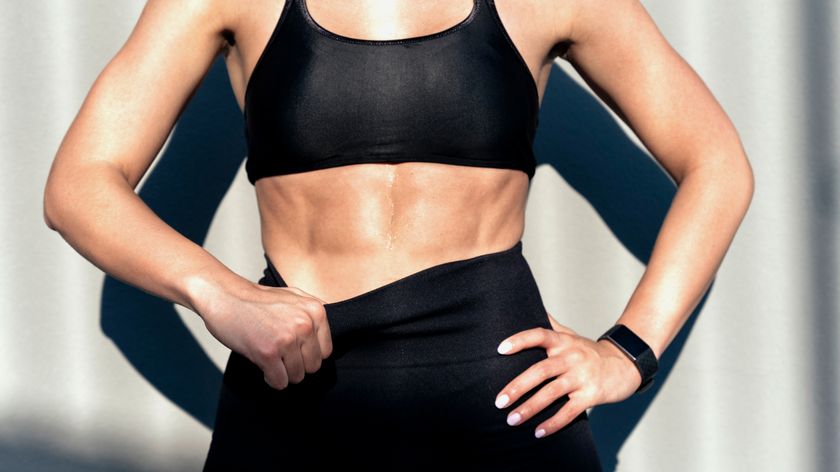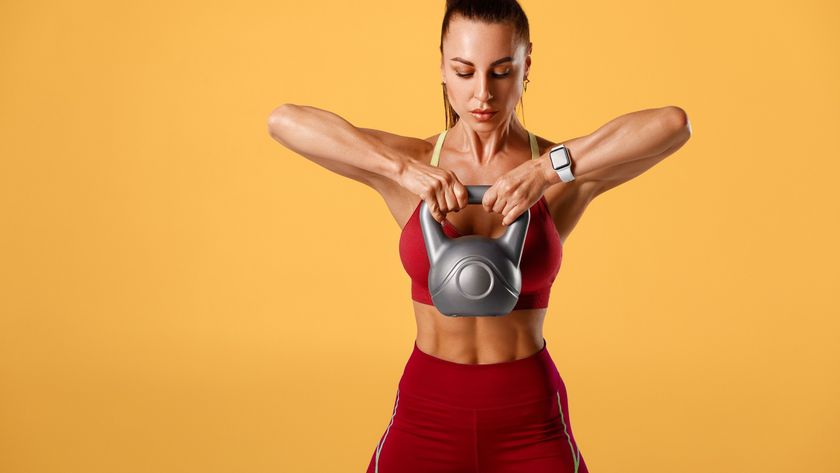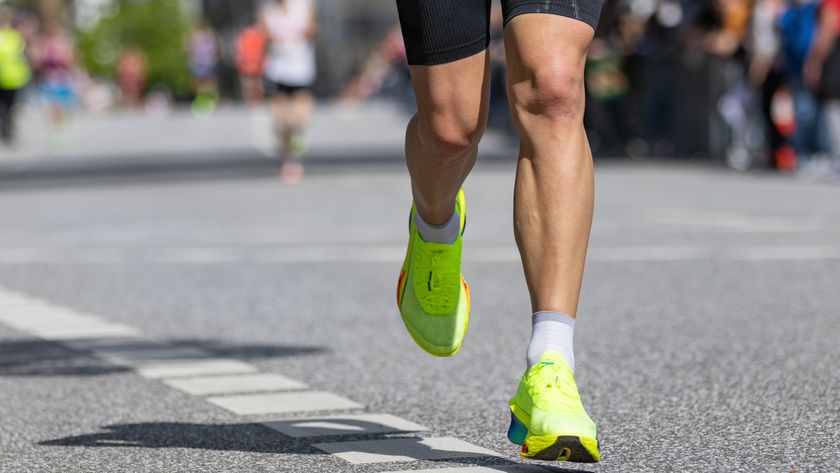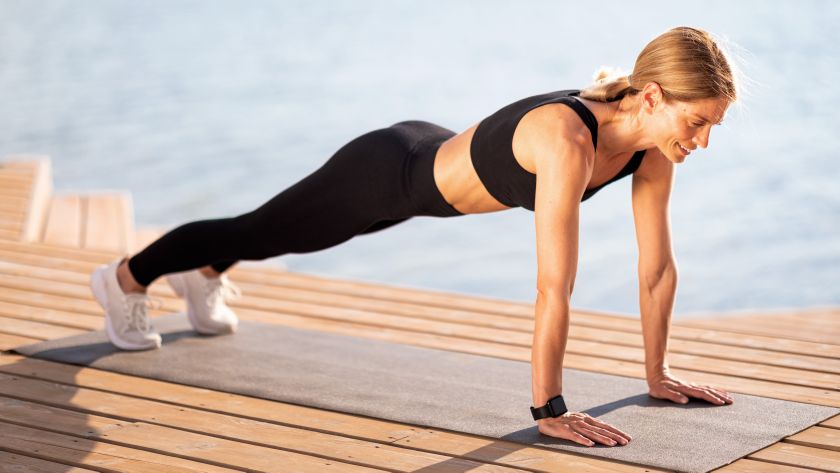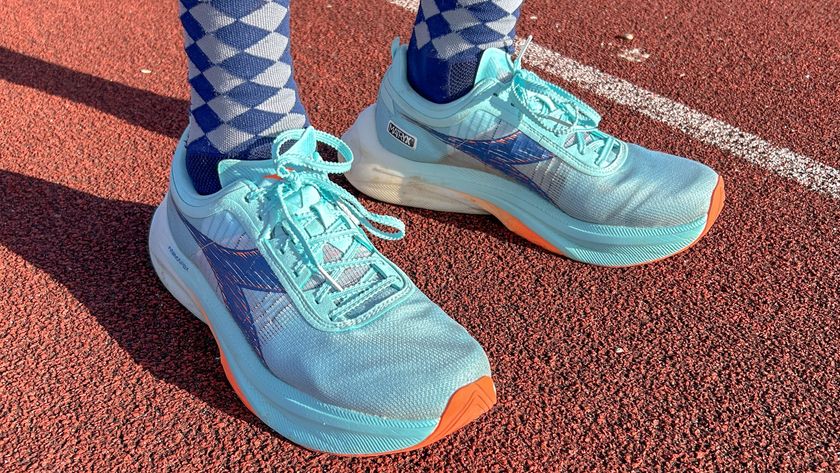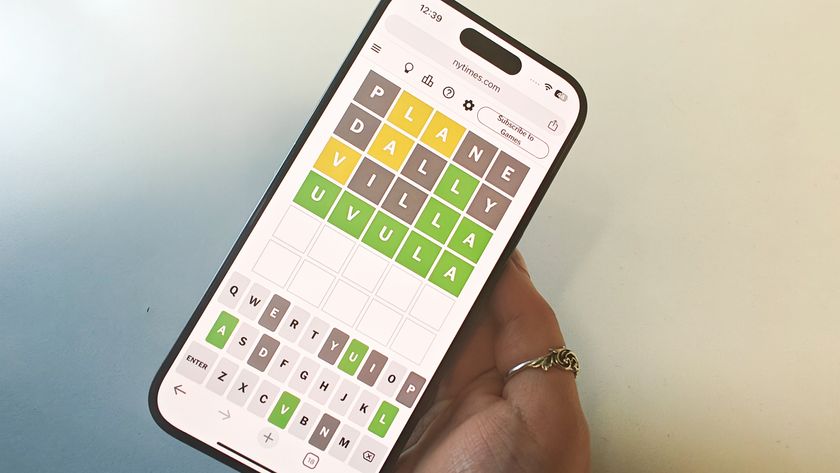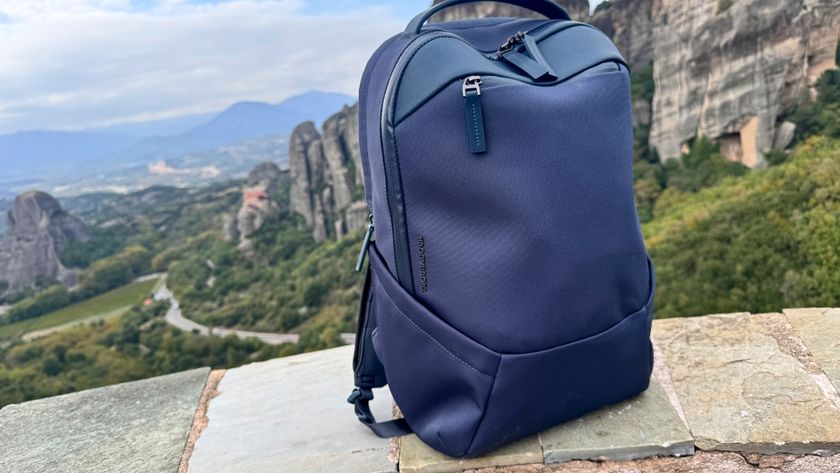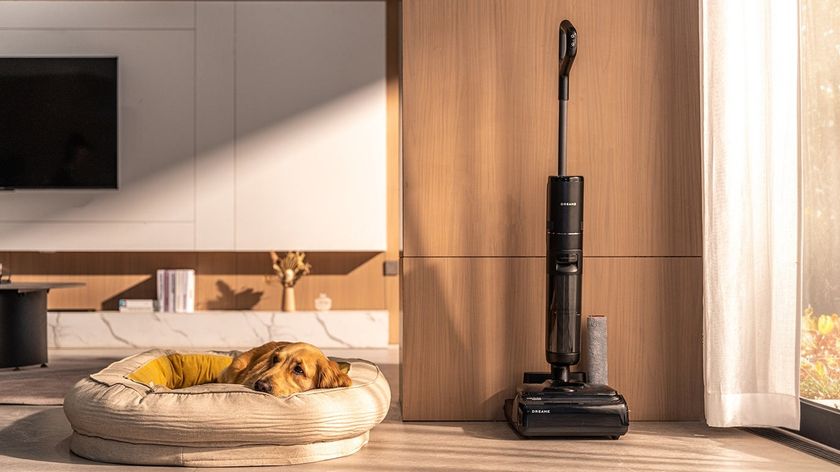I did 50 kettlebell around the worlds a day for a week — here’s what happened to my arms and abs
Add this kettlebell exercise to your next workout

When it comes to the best kettlebell exercises for working your core, you might have heard of the kettlebell around the world, also known as a hip halo, or kettlebell circles. On paper, the move looks easy — you’re simply rotating a kettlebell around your body, however, this is an excellent exercise to add to your warm-ups to work your arms and abs, as well as work on your grip strength before moving on to more complex moves.
But how do you do a kettlebell around the world, and what would happen if you did 50 a day for a week? To find out more, I grabbed one of the best kettlebells, and in the name of good content, I got going: rotating the kettlebell around and around my body. If that alone makes you feel dizzy, read on to find out what happened.
As a reminder, here on the Tom’s Guide fitness desk, we love nothing more than a weird and wonderful workout challenge, but doing the same exercise day after day isn’t recommended long-term. Your muscles need time to rest and recover, and to build overall strength, you need to vary your workouts.
If you’re new to exercise, or you’re returning to exercise following an injury or pregnancy, it’s a good idea to check your form with a personal trainer befor, and in the name of good content, I got going rotating the kettlebell around and around my body. If that alone makes you feel dizzy, read on to find out what happened.
How to do a kettlebell around the world
For this exercise, you’ll need one of the best kettlebells on the market. When it comes to selecting the right weight, remember that the exercise should feel challenging, but not impossible, by the final few reps. At no point should your form be compromised by the weight. As you’ll be holding the kettlebell in one hand throughout this exercise, you’ll probably want to go for a lighter weight than you would for kettlebell swings.
Let’s take a look at how to do a kettlebell around the world with perfect form:
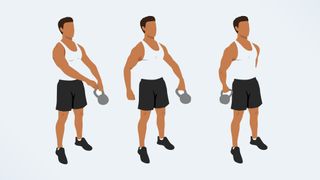
- Start by standing tall, with your feet shoulder-width apart, and a kettlebell in one hand. Draw your chin in and open your chest proud, and brace your core, thinking about sucking your belly button into your spine.
- Start rotating the kettlebell around your body — either clockwise or anti-clockwise is fine. When the kettlebell is directly in front of your body, switch hands, and then switch back when the kettlebell is directly behind your body.
- The kettlebell should not be touching your body at any point during the exercise.
- Keep the movement slow and controlled — don’t let the momentum of the kettlebell rock your body from side to side. Ensure you stay grounded in your starting position.
- Keep your arms straight throughout the exercise.
- Switch direction halfway through your reps.
As a reminder, the key here is to move with control. You want to move fast enough that you have some momentum and can feel your muscles working, but at no time should you be swinging the kettlebell, or letting your body move with the weight. It’s important to maintain a good posture throughout the exercise. To make things harder, increase the weight of the kettlebell.
Sign up to get the BEST of Tom's Guide direct to your inbox.
Get instant access to breaking news, the hottest reviews, great deals and helpful tips.
I did 50 kettlebell around the worlds a day for a week — here’s what happened
I had to really work on my stability in the move
On day one of this challenge, I naively thought it would be easy — heck, it’s just rotating a kettlebell around your hips, right? I set up my phone to video my form, and when I dropped my kettlebell back down to the exercise mat 50 reps later, I was shocked by what I saw. As the kettlebell moved around the waist, my hips seemed to move with it.
To help work on my stability in the move, a personal trainer friend told me to put a yoga block between my feet and think about squeezing it to keep my legs engaged throughout the move. This definitely helped me stay more solid and stable in my lower body.
I felt my arms and core working
One of the benefits of this move is that it really works your stabilizer muscles hard as you work to control the kettlebell’s movement around your body. The stabilizer muscles aren’t directly involved in movement but help keep you steady as you do move, so are vital for all sports. Throughout the move, I had to think about keeping my trunk steady by really squeezing my core, and while it didn’t torch my abs as much as a plank would, I could feel them working.
That said, by day three, I could really feel this one in my arms — particularly my shoulders. It’s important to keep your shoulders down and avoid hunching as you move the kettlebell, and I found as the week went on, I got more confident with the move. My forearms and wrist muscles also had to work incredibly hard to grip the kettlebell as I moved — I’ve never had particularly good grip strength, so adding exercises like this to my warm-up can help me work on it.
It helped me get more confident with a kettlebell
I often reach for a set of the best adjustable dumbbells over a kettlebell for most of my strength workouts, but doing the kettlebell around the world for a week really helped me get to grips with moving with a kettlebell. As you focus on moving the weight 360 degrees around the body, you’re working in a different plane of motion to normal strength exercises. This twisting motion can help increase your strength during cleans and snatches.
I did 50 kettlebell around the worlds a day for a week — my verdict
So, what did I learn after a week of doing 50 reps of the kettlebell around the world exercise a day? For starters, I really enjoyed this challenge — I could feel it in my arms and my core, but unlike other exercises, I felt like I also had to engage deep stabilizer muscles I probably neglected in my usual workout routine.
While I’m not going to continue doing 50 reps a day for the next few weeks, I’ll definitely be incorporating this one into my warm-up routine ahead of strength sessions going forward.
More from Tom's Guide

Jane McGuire is Tom's Guide's Fitness editor, which means she looks after everything fitness related - from running gear to yoga mats. An avid runner, Jane has tested and reviewed fitness products for the past five years, so knows what to look for when finding a good running watch or a pair of shorts with pockets big enough for your smartphone. When she's not pounding the pavements, you'll find Jane striding round the Surrey Hills, taking far too many photos of her puppy.
